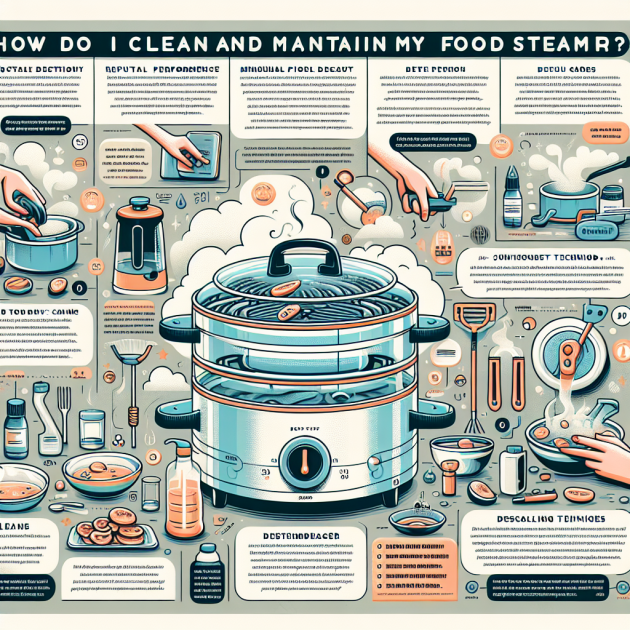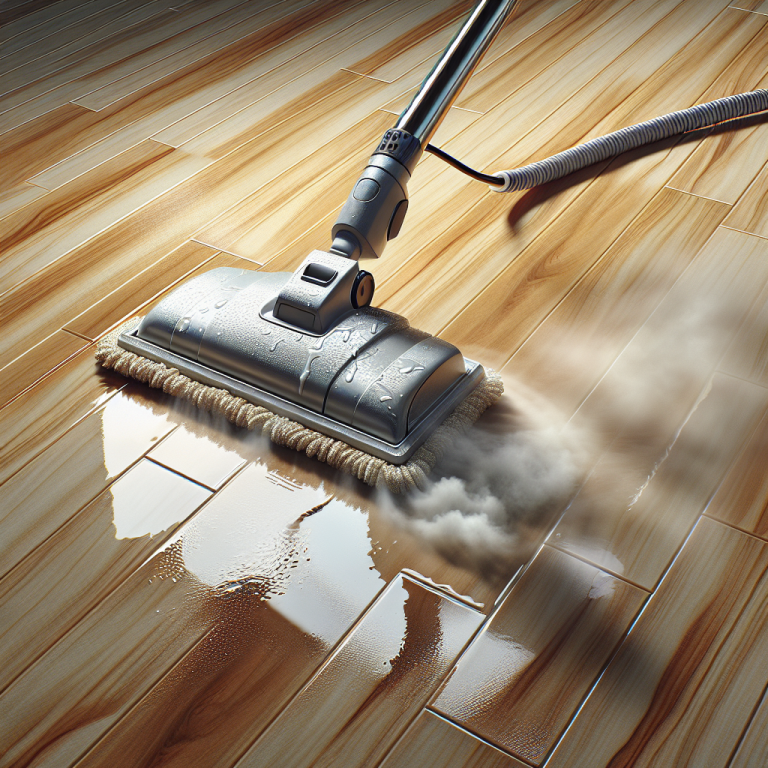How Do I Clean And Maintain My Food Steamer?
If you’re a proud owner of a food steamer, you might be wondering how to keep it in tip-top shape. Well, fret not! In this article, we will guide you through the simple yet vital steps to clean and maintain your food steamer. From tackling stubborn stains to ensuring its longevity, we’ve got you covered. So, let’s dive into the world of food steamer maintenance and make sure your favorite appliance remains in prime condition for years to come.
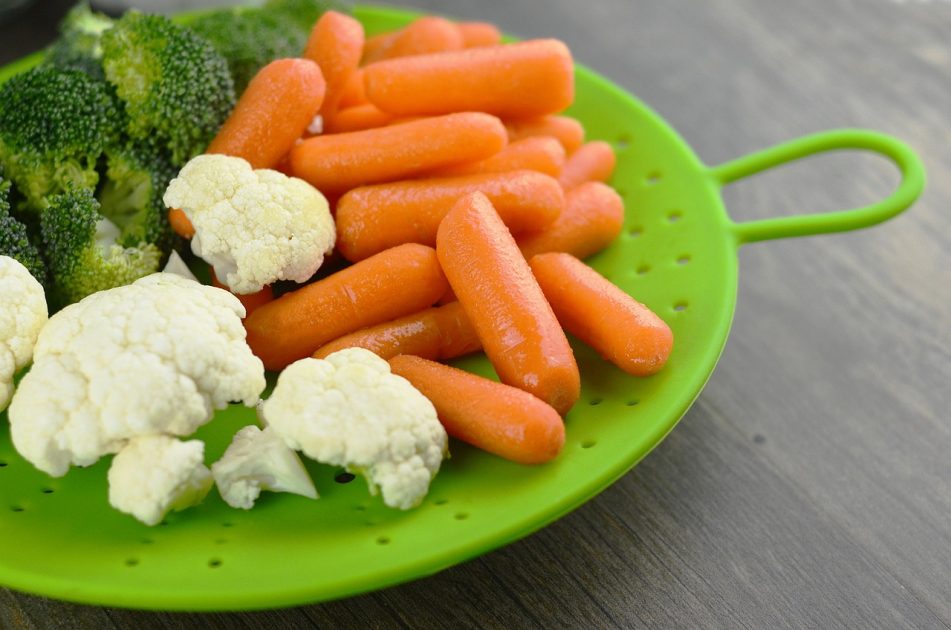
Understanding Your Food Steamer
Knowing its Components
When it comes to understanding your food steamer, it’s important to first familiarize yourself with its components. A typical food steamer consists of a base unit, water reservoir, steaming trays, lid, and a power cord. The base unit houses the heating element and controls, while the water reservoir is where you add water for steaming. The steaming trays are where you place your food, allowing the steam to cook it. The lid helps to trap the steam, creating a cooking environment, and the power cord connects the steamer to an electrical outlet.
Identifying the type of steamer
Food steamers come in various types, including bamboo steamers, electric steamers, and microwave steamers. Bamboo steamers are traditional Asian steamers made from bamboo and require the use of a wok or pot. Electric steamers, on the other hand, are standalone units that are easy to use and offer precise temperature control. Microwave steamers are designed specifically for use in microwave ovens and are a convenient option for quick steaming. Understanding the type of steamer you have will help you determine the best cleaning and maintenance practices.
Getting started with the user manual
To ensure proper cleaning and maintenance of your food steamer, it’s essential to refer to the user manual that came with the appliance. The user manual will provide you with detailed instructions on how to operate, clean, and maintain your specific food steamer model. It will also provide valuable information on any specific cleaning agents or tools that should be used or avoided. Familiarizing yourself with the user manual will ensure that you can safely and effectively clean and maintain your food steamer.
Regular Cleaning of Food Steamer
Cleaning after each cooking session
To maintain the cleanliness and optimal performance of your food steamer, it’s important to clean it after each cooking session. Start by unplugging the steamer and allowing it to cool down. Remove any food residue or scraps from the steaming trays, being careful not to damage their non-stick surfaces. Wash the trays, lid, and base unit in warm soapy water, using a non-abrasive sponge or cloth. Rinse them thoroughly and allow them to air dry before reassembling.
How to disassemble the parts for cleaning
To thoroughly clean your food steamer, it’s necessary to disassemble its various parts. Start by unplugging the steamer and removing the lid, steaming trays, and any other detachable components. Refer to the user manual for specific instructions on how to disassemble your particular food steamer model. Take care not to force any parts if they seem stuck or difficult to remove. Proper disassembly will ensure that you can clean all the nooks and crannies of your food steamer.
Using appropriate cleaning tools and solutions
When cleaning your food steamer, it’s important to use the right tools and cleaning solutions to avoid damaging the appliance. Use a soft sponge or cloth for wiping down the surfaces, and avoid using abrasive materials that can scratch or wear out the non-stick coatings. Additionally, avoid using harsh chemical cleaners that can leave residues or damage the steamer’s components. Instead, opt for mild, non-abrasive dish soap and warm water for everyday cleaning. Some food steamers may also have dishwasher-safe components, but always check the user manual to be sure.
Deep Cleaning of Food Steamer
When to do a deep clean
While regular cleaning after each use is important, a deep clean is necessary from time to time to remove stubborn residue and ensure the longevity of your food steamer. It’s recommended to do a deep clean every few months or as needed, depending on the frequency of use and the condition of your steamer. If you notice a buildup of limescale or other stubborn stains, it’s time for a deep clean.
Steps in deep cleaning a food steamer
To deep clean your food steamer, start by thoroughly cleaning the removable parts as mentioned earlier. Next, mix equal parts of distilled white vinegar and water in a bowl. Fill the water reservoir of your steamer with the vinegar-water solution. Place the steaming trays and lid back on the steamer and turn it on, allowing the solution to steam for about 15-20 minutes. This will help loosen any buildup or residue within the steamer. After the steaming process, carefully discard the remaining solution and rinse all the parts with clean water. Finally, wipe down the surfaces with a soft cloth or sponge and allow everything to air dry completely before reassembling.
Common issues to look out during deep clean
During the deep cleaning process, it’s important to keep an eye out for any potential issues that may arise. Check for any signs of wear or damage on the heating element, power cord, or other electrical components. If you notice any frayed wires, loose connections, or other abnormalities, it’s best to consult a professional for repair or replacement. Additionally, inspect the steaming trays and lid for any cracks or damage that may affect their performance. Taking these precautions during deep cleaning will ensure the safe and efficient operation of your food steamer.
Dealing with Limescale Build-up
Identifying limescale
Limescale is a common issue that can occur in food steamers, especially in areas with hard water. It appears as a white, chalky residue that accumulates on the heating element, water reservoir, and other interior surfaces of the steamer. Limescale buildup can hinder the performance of your food steamer and affect the taste and quality of your food.
How to remove limescale
To remove limescale buildup from your food steamer, you can use a descaling solution specifically designed for kitchen appliances. Follow the instructions on the descaling solution’s packaging, as different products may have varying application methods. Typically, you will need to dilute the descaling solution with water, pour it into the water reservoir, and run a steaming cycle to allow the solution to dissolve the limescale. After the cycle is complete, thoroughly rinse the reservoir and all the parts with clean water to remove any descaling residue.
Preventing future limescale build-up
Prevention is key when it comes to limescale build-up in your food steamer. To minimize the formation of limescale, it’s recommended to use distilled or filtered water for steaming instead of tap water, especially if your area has hard water. Keep an eye out for any signs of limescale and address it promptly to prevent further build-up. Regular maintenance and cleaning, as well as descaling when necessary, will help keep your food steamer free from limescale and operating at its best.
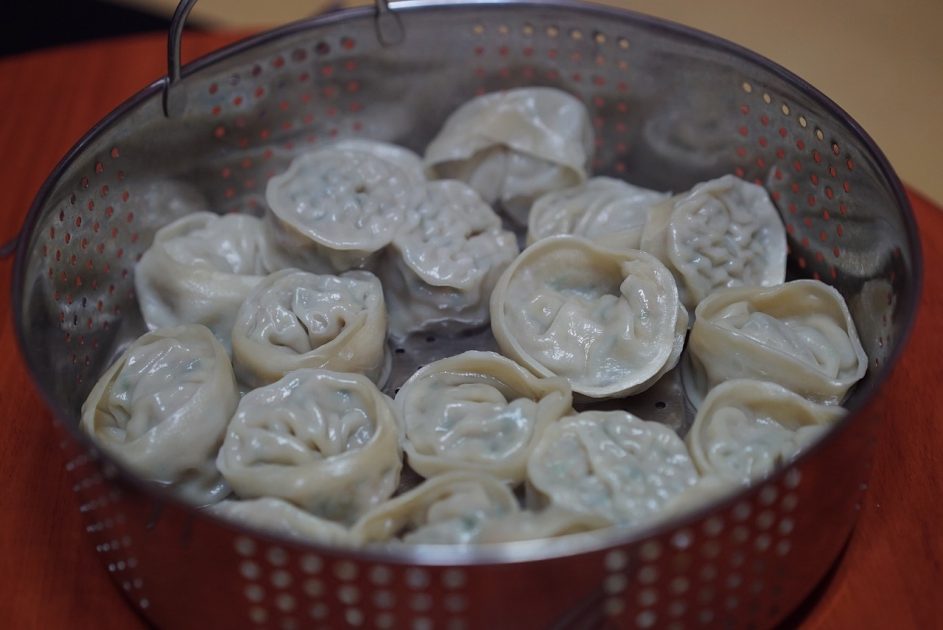
Food Steamer Maintenance Tips
Correct storage of the food steamer
Proper storage of your food steamer is crucial to keep it in good condition and prolong its lifespan. After each use and cleaning, ensure that all the parts are completely dry before storing them. Avoid stacking heavy objects on top of the steamer or placing it in a crowded cabinet, as this can cause damage to the components or affect its performance. If possible, store the steamer in a cool, dry place where it is easily accessible for future use.
Regular inspection of parts
Performing regular inspections of your food steamer will help you identify any potential issues or signs of wear before they become major problems. Check the power cord for any signs of damage, such as frayed wires or loose connections. Inspect the heating element for any buildup or corrosion that may affect its performance. Additionally, check the steaming trays and lid for cracks or damage that may impact their functionality. By proactively identifying and addressing these issues, you can ensure the safe and efficient operation of your food steamer.
Repair and replacement tips
If you encounter any issues with your food steamer that you are unable to resolve on your own, it is advisable to consult a professional for repair or replacement. Attempting to repair electrical components or using the steamer with damaged or malfunctioning parts can be dangerous and may void any warranties. When seeking repair services, look for authorized service centers or contact the manufacturer for guidance. If replacement parts are needed, ensure that they are genuine and compatible with your specific food steamer model.
Common Food Steamer Problems and Solutions
Troubleshooting common issues
While food steamers are generally reliable appliances, they can encounter some common problems. If you notice that the steamer is not heating up properly or there is a lack of steam, check if the heating element is clean and not blocked by any limescale or residue. Ensure that the water reservoir is filled to the appropriate level and that the lid is securely closed. If the steamer is still not functioning correctly, refer to the user manual for specific troubleshooting steps or consult a professional for assistance.
When to seek professional help
There may be situations where DIY troubleshooting is not sufficient to resolve the issues with your food steamer. If you experience electrical issues, such as sparks, unusual noises, or persistent malfunctions, it is crucial to seek professional help. Electrical problems can be dangerous and should be addressed by a qualified technician. Similarly, if you encounter complex mechanical issues or if the steamer is under warranty, it is advisable to consult authorized service centers or contact the manufacturer for further assistance.
Replacement of faulty components
In some cases, faulty components may need to be replaced to restore the functionality of your food steamer. If you notice a specific part that is damaged or no longer working, refer to the user manual or contact the manufacturer to identify the correct replacement part. It’s important to use genuine replacement parts to ensure compatibility and maintain the safety and performance of the food steamer.

Safety Precautions while Cleaning and Maintaining Food Steamers
Handling electrical components
When cleaning and maintaining your food steamer, it’s essential to prioritize safety. Always unplug the steamer from the power source before starting any cleaning or maintenance tasks. Avoid touching the heating element or other electrical components when they are hot or wet, as this can cause electric shock or burns. If you encounter any electrical issues or suspect a malfunction, it is recommended to seek professional help rather than attempting to fix it yourself.
Handling hot parts
Food steamers generate steam and heat, so it’s important to handle the hot parts with caution. Use oven mitts or heat-resistant gloves when removing steaming trays or handling the lid. Allow the appliance to cool down before disassembling or cleaning it to avoid possible burns. Always follow the recommended cooling time mentioned in the user manual to ensure your safety.
Safe use of cleaning agents
When using cleaning agents for your food steamer, ensure that you follow the instructions provided by the manufacturer. Some cleaning agents may require dilution or specific application methods. Avoid mixing different cleaning solutions or using excessive amounts of cleaning agents, as this can cause chemical reactions or damage to the steamer’s components. If you prefer using environmentally friendly cleaning solutions, refer to the section below for some alternative options.
Benefits of Regularly Cleaned and Maintained Food Steamer
Longer lifespan of the device
Regular cleaning and maintenance of your food steamer can significantly extend its lifespan. By removing food residues, limescale, and other build-up, you prevent corrosion and improve the overall performance of the appliance. A well-maintained food steamer will continue to function optimally for many years, ensuring you can enjoy healthy and delicious steamed meals for a long time.
Improved food taste
A clean food steamer not only ensures the longevity of the appliance but also contributes to the taste and quality of the food you prepare. By removing any leftover food particles or odors from previous cooking sessions, you prevent cross-contamination and maintain the natural flavors of your ingredients. Regular cleaning and maintenance will help your food steamer consistently deliver delicious and flavorful meals.
Energy efficiency benefits
A clean and well-maintained food steamer operates more efficiently, resulting in energy savings. The removal of limescale and other deposits from the heating element allows it to work at its full potential, reducing the time and energy required to generate steam. By keeping your food steamer in optimal condition, you not only save on energy costs but also contribute to a more sustainable environment.
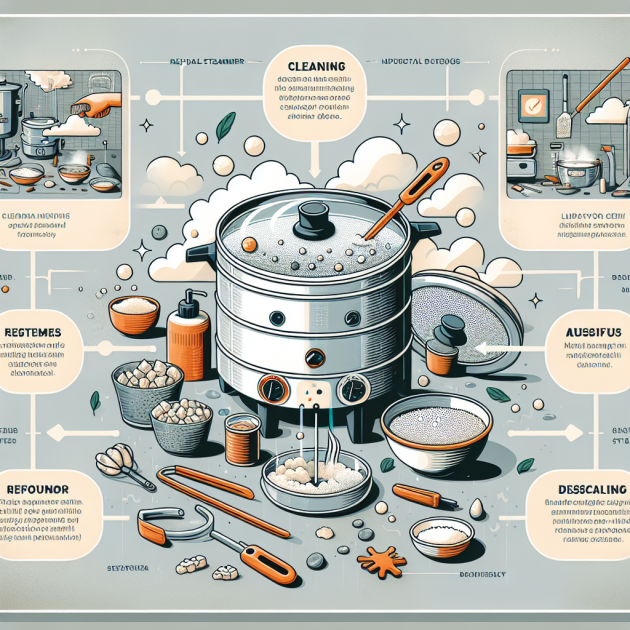
Environmentally Friendly Cleaning Solutions
Using baking soda and vinegar
Baking soda and vinegar are versatile and effective natural cleaning agents that can be used to clean and descale your food steamer. To remove food stains and odors, sprinkle baking soda on a damp cloth or sponge and wipe down the surfaces of the steamer. For limescale removal, create a solution of equal parts vinegar and water, and apply it to the affected areas. Allow the solution to sit for a few minutes, then scrub gently with a sponge or cloth. Rinse thoroughly with clean water to remove any residue.
Lemon as a natural descaler
Lemon is another natural and eco-friendly option for descaling your food steamer. Cut a lemon in half and squeeze the juice onto the areas with limescale. Rub the lemon halves on the surface or dip a cloth or sponge in lemon juice and scrub the affected parts. Allow the lemon juice to sit for a few minutes, then rinse thoroughly with clean water. Lemon not only helps to remove limescale but also leaves a fresh citrus scent.
Safe disposal of cleaning waste
When using cleaning agents, it’s important to dispose of the waste properly to minimize environmental impact. For baking soda and vinegar solutions, they can be safely rinsed down the drain since they are natural and biodegradable. However, be cautious when disposing of any descaling solution or lemon juice, as they may contain higher acidity. Check with your local waste management regulations to determine the appropriate method of disposal or consider using environmentally friendly cleaning products that can be safely disposed of.
FAQs about Food Steamer Cleaning and Maintenance
How often should I clean my food steamer?
It’s recommended to clean your food steamer after each use to remove any food residue and maintain cleanliness. Additionally, a deep cleaning should be performed every few months to remove limescale and ensure optimal performance. However, the frequency of cleaning may vary depending on the frequency of use and the condition of your steamer. It’s important to observe any signs of buildup or odors and clean your food steamer as needed.
Can I use any cleaner for my food steamer?
Not all cleaners are suitable for use on food steamers. It’s important to refer to the manufacturer’s recommendations or the user manual to determine which cleaners are safe to use. Harsh chemical cleaners or abrasives should be avoided, as they can damage the appliance’s components or leave residues that can affect food safety.
What if my food steamer still has an odor after cleaning?
Persistent odors in your food steamer may indicate the presence of stubborn food residue or limescale. In such cases, it may be necessary to repeat the cleaning process or perform a deep clean. Ensure that you thoroughly clean all the parts, paying attention to hard-to-reach areas and the water reservoir. If the odor persists, it’s advisable to seek professional help or consider replacing any components that may be causing the issue.
